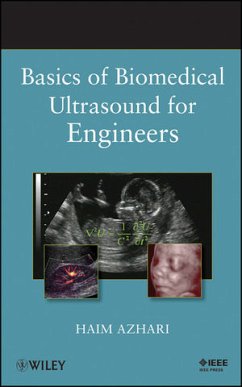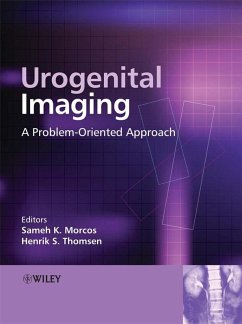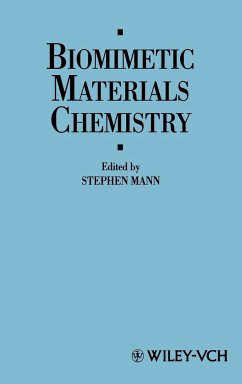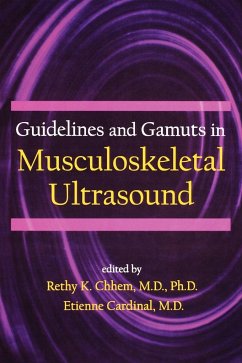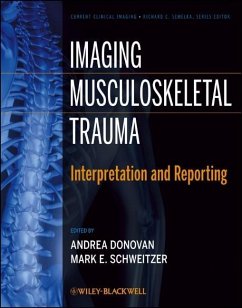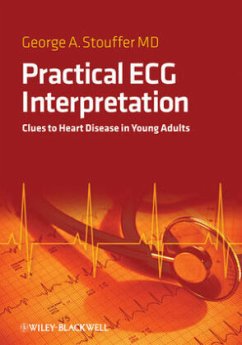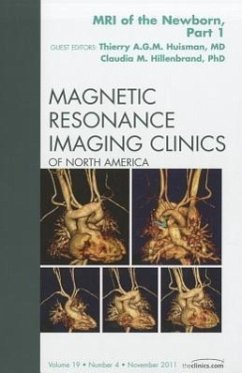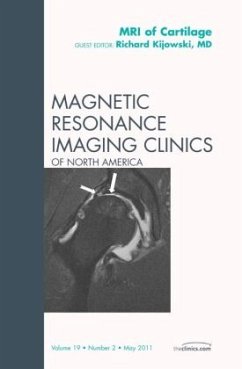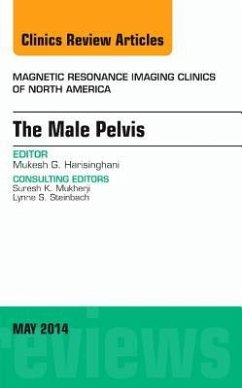
Magnetic Resonance Imaging
Physical Principles and Sequence Design
By E. M. Haacke, Robert W. Brown, Michael R. Thompson et al.
Versandkostenfrei!
Versandfertig in über 4 Wochen
245,99 €
inkl. MwSt.
Weitere Ausgaben:

PAYBACK Punkte
123 °P sammeln!
Already considered the preeminent text in MR physics, this second edition of Magnetic Resonance Imaging provides the most comprehensive yet approachable introduction to the physics and applications of the subject. This classic text for advanced undergraduates, graduates, instructors, physicists, and engineers includes expanded coverage of trace analysis, spatial limitations of diffusion processes, diffusion tensor imaging, contrast mechanisms, and image distortion correction, and a new chapter on parallel imaging, as well as sections on relaxation processes, radiofrequency (rf) penetration and high field issues in physiological MRI.
New edition explores contemporary MRI principles and practices
Thoroughly revised, updated and expanded, the second edition of Magnetic Resonance Imaging: Physical Principles and Sequence Design remains the preeminent text in its field. Using consistent nomenclature and mathematical notations throughout all the chapters, this new edition carefully explains the physical principles of magnetic resonance imaging design and implementation. In addition, detailed figures and MR images enable readers to better grasp core concepts, methods, and applications.
Magnetic Resonance Imaging, Second Edition begins with an introduction to fundamental principles, with coverage of magnetization, relaxation, quantum mechanics, signal detection and acquisition, Fourier imaging, image reconstruction, contrast, signal, and noise. The second part of the text explores MRI methods and applications, including fast imaging, water-fat separation, steady state gradient echo imaging, echo planar imaging, diffusion-weighted imaging, and induced magnetism. Lastly, the text discusses important hardware issues and parallel imaging.
Readers familiar with the first edition will find much new material, including:
New chapter dedicated to parallel imaging
New sections examining off-resonance excitation principles, contrast optimization in fast steady-state incoherent imaging, and efficient lower-dimension analogues for discrete Fourier transforms in echo planar imaging applications
Enhanced sections pertaining to Fourier transforms, filter effects on image resolution, and Bloch equation solutions when both rf pulse and slice select gradient fields are present
Valuable improvements throughout with respect to equations, formulas, and text
New and updated problems to test further the readers grasp of core concepts
Three appendices at the end of the text offer review material for basic electromagnetism and statistics as well as a list of acquisition parameters for the images in the book.
Acclaimed by both students and instructors, the second edition of Magnetic Resonance Imaging offers the most comprehensive and approachable introduction to the physics and the applications of magnetic resonance imaging.
Thoroughly revised, updated and expanded, the second edition of Magnetic Resonance Imaging: Physical Principles and Sequence Design remains the preeminent text in its field. Using consistent nomenclature and mathematical notations throughout all the chapters, this new edition carefully explains the physical principles of magnetic resonance imaging design and implementation. In addition, detailed figures and MR images enable readers to better grasp core concepts, methods, and applications.
Magnetic Resonance Imaging, Second Edition begins with an introduction to fundamental principles, with coverage of magnetization, relaxation, quantum mechanics, signal detection and acquisition, Fourier imaging, image reconstruction, contrast, signal, and noise. The second part of the text explores MRI methods and applications, including fast imaging, water-fat separation, steady state gradient echo imaging, echo planar imaging, diffusion-weighted imaging, and induced magnetism. Lastly, the text discusses important hardware issues and parallel imaging.
Readers familiar with the first edition will find much new material, including:
New chapter dedicated to parallel imaging
New sections examining off-resonance excitation principles, contrast optimization in fast steady-state incoherent imaging, and efficient lower-dimension analogues for discrete Fourier transforms in echo planar imaging applications
Enhanced sections pertaining to Fourier transforms, filter effects on image resolution, and Bloch equation solutions when both rf pulse and slice select gradient fields are present
Valuable improvements throughout with respect to equations, formulas, and text
New and updated problems to test further the readers grasp of core concepts
Three appendices at the end of the text offer review material for basic electromagnetism and statistics as well as a list of acquisition parameters for the images in the book.
Acclaimed by both students and instructors, the second edition of Magnetic Resonance Imaging offers the most comprehensive and approachable introduction to the physics and the applications of magnetic resonance imaging.




